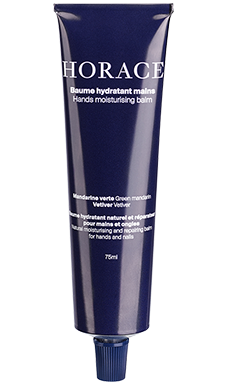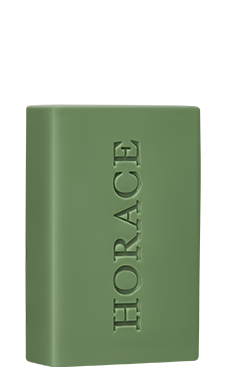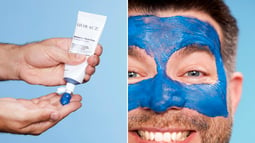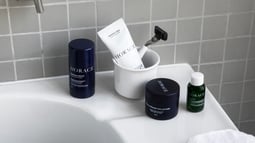
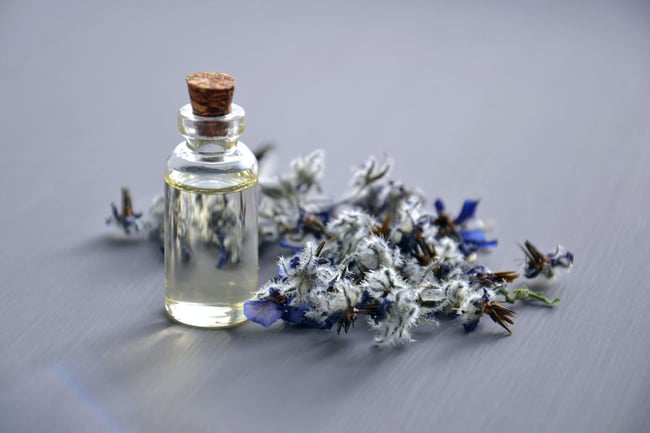
Use, dosage, and benefits… Our extensive guide to essential oils
Photos Louis Canadas
Words Anthony Vincent
Share the article on
Essential oils are prime ingredients in skin care products, including our soap bars and shower gels. They are full of benefits and can be used in many ways. Read on to learn all about them.
We all know at least one person who is heavily invested in naturopathy and only swears by the power of essential oils to cure small health problems. Essential oils are natural fragrances with numerous natural therapeutic benefits that make them choice ingredients in care products.
What are essential oils used for?
While essential oils are used to perfume some of our products, they also provide age-old benefits. Egyptians already knew how to extract cedar essence more than 4,000 years ago! In the 19th century, important scientific publications highlighted the powerful anti-infectious properties of essential oils. Since then, other studies have confirmed their antiseptic, antibacterial, antibiotic, antifungal, antiparasitic, and deworming powers. Some of them – such as rosemary, lavandin, or arnica essential oils – even help relieve pain from rheumatism.
Essential oils in our products
For example, in our Peppermint & Tea tree soap bar and shower gel, tea tree essential oil helps disinfect and heal. Peppermint essential oil helps soothe and even relieve certain pains. Together, they provide an ultra-refreshing effect. The essential oils in our Virginia Cedar & Sage leaf soap bar tone and stimulate your skin while offering woody and comforting scents. Our moisturising hand balm owes its fragrance to the relaxing green mandarin essential oil and the anti-inflammatory and calming vetiver essential oil it contains.
Getting the dosage right
The essential oil complexes we use for both their fragrance and their active ingredients are tested to ensure that they are not irritating. In case you were wondering, it can take up to two hundred kilograms of plants to obtain one kilogram of essential oil. This partly explains their great power and why they are potentially dangerous when incorrectly dosed. If you don't know how to use essential oils, you can easily go from a therapeutic dose to a catastrophic one. Three drops of sage essential oil are enough for a potent therapeutic effect. On the other hand, twenty drops could cause real damage, such as intoxications and skin irritation. The number of drops varies according to skin type, skin sensitivity, the intended purpose (from purely olfactory to therapeutic), and above all, the essential oil itself. This is all the more important as, from one brand to another, droppers can deliver different amounts of oil. As a rule, twenty-five drops of essential oil correspond to one millilitre (one drop equals 0.04 millilitres).
Proper application of essential oils
Only very few essential oils can be applied directly to the skin in their undiluted form. The common practice is to dilute a few drops of essential oil in vegetable oil (such as hazelnut, jojoba, or macadamia oil) in order to make them easier to tolerate. In general, if you want to make your own homemade essential oil-based skin care products, we recommend following specific recipes and reliable sources. For example, to prepare a simple massage oil, pour thirty drops of essential oils of your choice into fifty millilitres of fatty vegetable oil (i.e., sweet almond or avocado oil). We recommend fifteen drops of green mandarin essential oil mixed with fifteen drops of petitgrain essential oil and fifty millilitres of macadamia vegetable oil for relaxing massage oil. To boost and perfume your face care products, use between 0.1 and 2% essential oil (avoid applying to the eye contour, nostrils, and lips). For body care products, you can increase the essential oil dosage up to 5%.
Precautions for use
Essential oils are potent. As such, pregnant and breastfeeding women, children, people who are seriously ill or suffering from neurological disorders should avoid using them. When properly dosed, essential oils are rarely allergenic, but you can always try applying some on the inside of your elbow to see how your skin reacts. Finally, some essential oils can have a slight photosensitizing effect. In other words, they make you more vulnerable to the sun's adverse effects. This mainly concerns citrus oils, but there's really nothing to worry about as long as you dilute them well or use products you trust.
How are essential oils obtained?
Essential oils result from two different processes: for citrus fruits, the peel (more specifically, the fruit's pericarp) is pressed, and for other plants (flowers, leaves, seeds, stems, roots, and other fruits), essential oil is obtained by steam distillation. For this second process, the vegetable materials are placed in a container called a still. Inside, they rest on a grid just above a small quantity of water brought to a boil. The steam thereby obtained passes through the plant mass and carries the volatile compounds upwards to the swan neck, where they are then condensed by cooling. The result of this process is obtained in the final container: a heterogeneous mixture of essential oil on the surface and floral water at the bottom. For citrus fruits (orange, lemon, grapefruit, tangerine, etc.), the peels are manually or mechanically pressed to burst the vesicles on the surface which contain these fruits' aromatic compounds. It's a very sophisticated way of describing what is essentially squeezing a zest, much like you would when preparing your favourite cocktail recipe. By now, you've probably understood that for both essential oils and cocktails, it's all a matter of dosage. Proper dilution will make for the perfect combination. Cheers!
